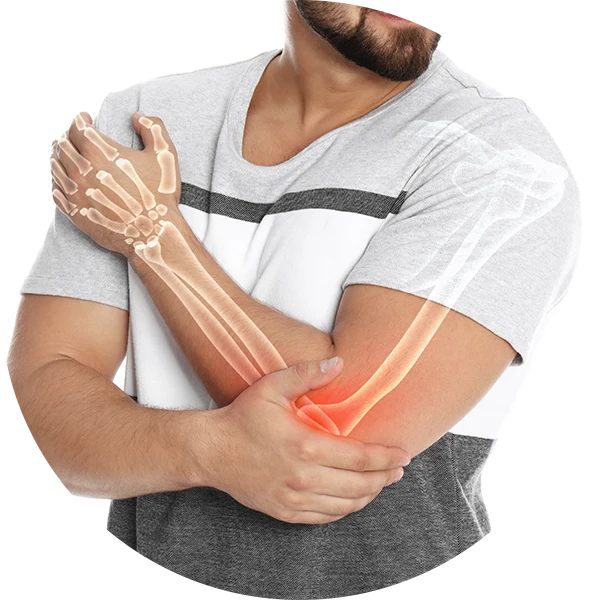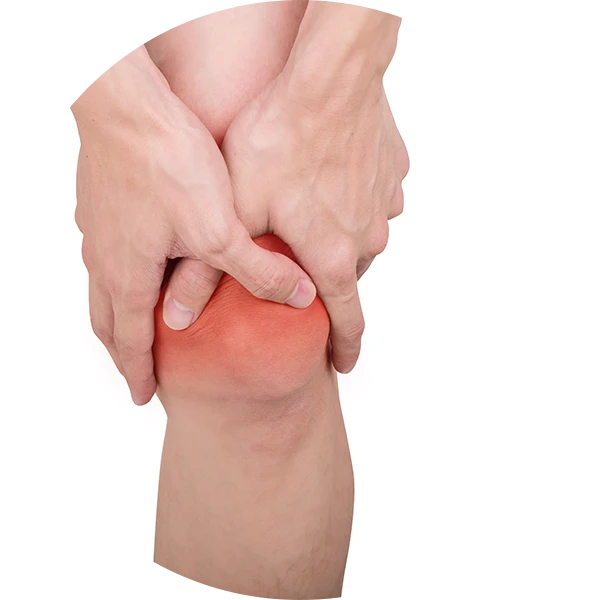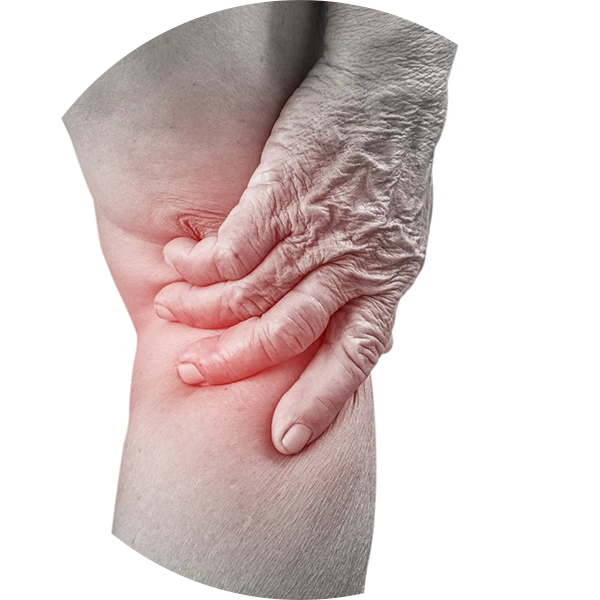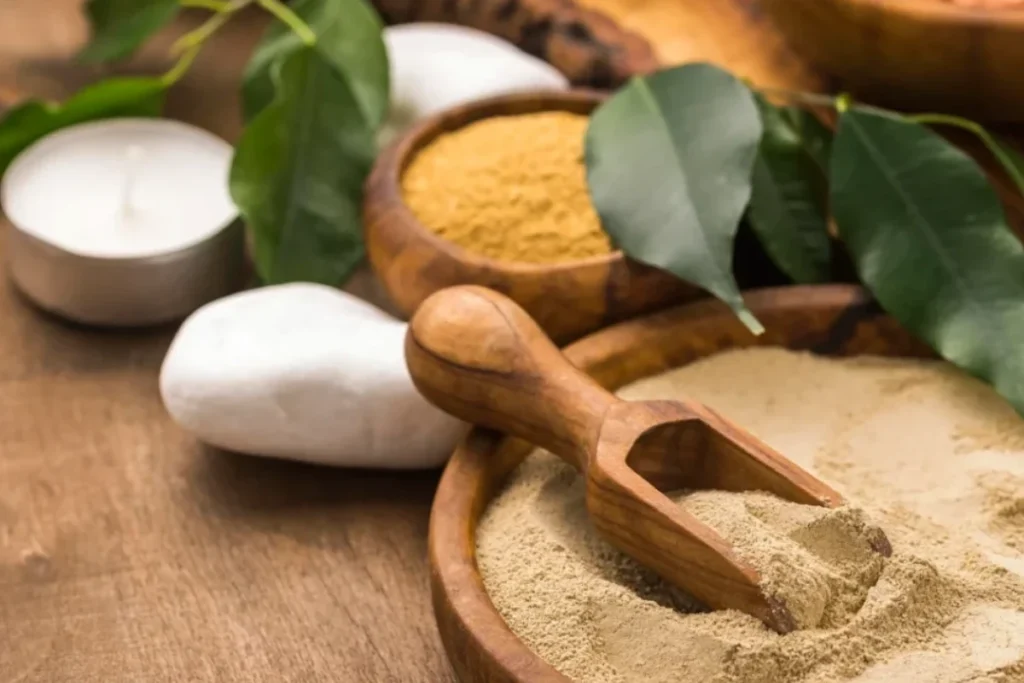Osteoarthritis (OA) is a common form of arthritis characterized by the progressive degeneration of cartilage in joints. It’s often called “wear-and-tear” arthritis because it typically develops over time as a result of mechanical stress on the joints. This deterioration leads to pain, stiffness, and reduced mobility. Unlike inflammatory arthritis conditions like rheumatoid arthritis, OA is primarily a degenerative joint disease.


Consuming cold, dry, and light foods; excessive fasting; irregular meal times; and a lifestyle with excessive travel, stress, or irregular sleep can all increase Vata.

Overuse or overexertion of joints, leading to micro-trauma and increased Vata.

Poor digestion leads to the accumulation of toxins (Ama) in the body. This Ama can lodge in the joints, obstructing channels and further aggravating Vata.

As we age, Vata naturally increases, making us more susceptible to Sandhivata.

Past joint injuries can disrupt the natural balance and predispose the joint to degeneration.

Joint Pain
(Sandhishula)

Swelling
(Sandhishotha)

Extension & Flexion pain
(Akunchana Prasaranayoh Vedana)

Crepitus
(Atopa)

Stiffness
(Stambha)

Emptiness
(Shunyata)









Due to a Vata-aggravating diet and lifestyle, the Vata dosha in the body becomes imbalanced.
The aggravated Vata, with its dry and depleting qualities, starts to consume the body’s tissues, particularly the joints, bones (Asthi Dhatu), and cartilage.
In some cases, weak digestion leads to the formation of Ama (toxins). This Ama, along with the vitiated Vata, obstructs the channels (Srotas) that nourish the joints.
The combination of tissue degeneration and channel obstruction leads to the classic symptoms of Sandhivata—pain, stiffness, and crepitus.
We begin with a detailed evaluation combining modern diagnostic tools with Ayurvedic assessments such as Prakriti (body constitution), Vikriti (current imbalance), dosha mapping, and lifestyle review. This dual lens helps us see the full picture of your health, beyond just the symptoms.
Ayurveda teaches us that diseases are born from underlying imbalances; not just isolated issues. We carefully study dietary habits, digestion (Agni), toxin accumulation (Ama), stress, and daily routines to uncover the true root cause of your condition.
No two patients are alike. Your treatment is tailored to your unique body type (Vata, Pitta, Kapha), disease stage, and co-existing conditions. This ensures maximum effectiveness and safety, while restoring balance at the deepest level.
Healing isn’t one-dimensional. Based on your needs, we combine:
This integrated approach ensures that body, mind, and spirit heal together.
Health doesn’t end with treatment. We equip you with home remedies, seasonal routines, lifestyle practices, and follow-up support to prevent relapse and help you sustain wellness for the long term.
Ayurvedic treatment for Sandhivata focuses on pacifying Vata, nourishing the joint tissues, strengthening Agni (digestive fire) to remove Ama, and rejuvenating the joints. The treatment plan is always tailored to the individual’s unique body constitution (Prakriti) and the specific doshic imbalance.

The primary goal is to balance Vata.

The focus is to calm Pitta and reduce inflammation.

The aim is to reduce heaviness and stiffness.

Warm, cooked foods, healthy fats like ghee and sesame oil, and hydrating broths. Include spices like ginger, turmeric, and black pepper, which aid digestion and reduce inflammation.

Cold, dry, and raw foods (salads, raw vegetables), excessive intake of beans, cabbage, and other Vata-aggravating foods. Avoid processed foods, junk food, and refrigerated items.
| Do's | Don'ts |
|---|---|
Maintain a Regular Routine: Follow a consistent daily schedule for meals and sleep. | Avoid Vata Aggravating Foods: Steer clear of cold, dry, and raw items. |
Stay Hydrated: Drink warm water throughout the day to support digestion. | Refrain from Excessive Physical Strain: Avoid overexertion and lifting heavy weights. |
Oil Massage (Abhyanga): Regular self-massage with warm sesame oil nourishes the joints. | Avoid Cold Showers and Drafty Places: Protect your joints from cold and wind. |
Include Healthy Fats: Consume ghee and sesame oil in your diet to lubricate the joints. | Don’t Suppress Natural Urges: Avoid holding back urges to urinate, pass stools, etc. |
Poses like Tadasana (Mountain Pose), Virabhadrasana (Warrior Pose), and Bhujangasana (Cobra Pose) can strengthen and lubricate joints.
Nadi Shodhana (Alternate Nostril Breathing) helps calm the mind and balance Vata.
Gentle walking, swimming, and cycling can help maintain joint mobility without overstressing them.





Experience holistic healing and rejuvenation with Shree Ayurvedic, where traditional wisdom meets modern care for your health and wellness.





© 2025 Shree Ayurvedics. All Rights Reserved. Designed by Bee High Media